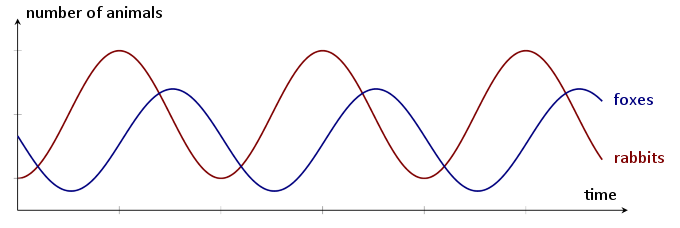Nature regulates itself
A graphic that shows how the populations of rabbits and foxes develop over time looks like this:

Graphic: Temporal relationship of the populations of foxes and rabbits
The populations of foxes and rabbits fluctuate wavelike, but the curve of the foxes runs a bit after the one of the rabbits. Furthermore, on average there is usually less prey then there are predators. Over longer periods of time the numbers are balanced.
If we focus on the rabbits, we will observe that, on average, their population stays steady over time. There are never too many rabbits. The population of the rabbits is self-regulated by this predator-prey relationship! More rabbits cause more foxes - and more foxes cause fewer rabbits. Ultimately the population of the rabbits is self-regulated.
This is not unlike the flatiron, our actual topic. The temperature of the iron regulates itself, too: A high temperature causes the electric circuit to disrupt - and this disrupture of the circuit in return causes the heat to lower. Do you already know how this self-regulation is accomplished technically?
